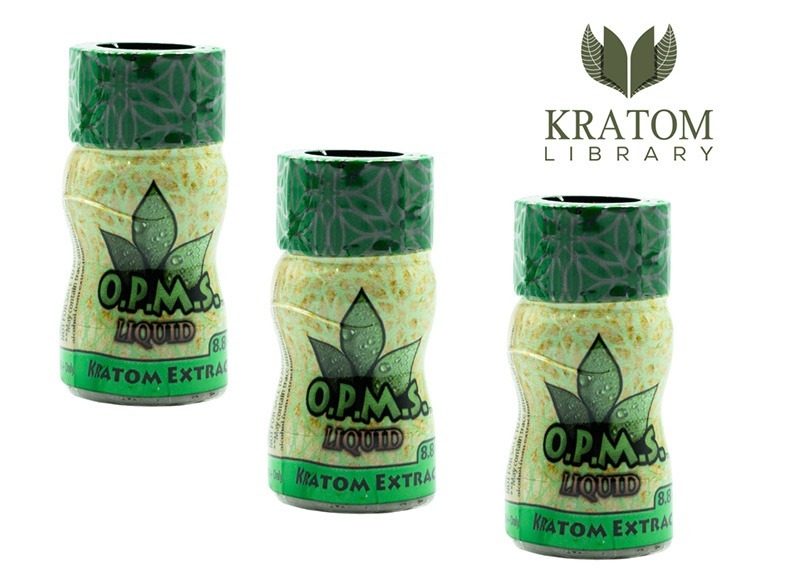Table of Contents
 [ez-toc] Kratom is an herbal supplement that is primarily used for its analgesic and mood-enhancing properties. It has been used for centuries in Southeast Asia for its medicinal benefits, and in recent years it has gained popularity in the Western world.
[ez-toc] Kratom is an herbal supplement that is primarily used for its analgesic and mood-enhancing properties. It has been used for centuries in Southeast Asia for its medicinal benefits, and in recent years it has gained popularity in the Western world.
While research on the therapeutic benefits is ongoing, there are a number of conditions in which users report gaining symptom relief through the use of this natural plant. In this article, we’ll discuss some of the conditions which may be helped and we’ll also talk through the different ways that kratom can be taken, from teas and tinctures to kratom shots and capsules.
Treating Chronic Pain
Chronic pain is defined as persistent pain that lasts for more than three to six months. It is a complex and often debilitating condition that can significantly affect a person’s quality of life. Chronic pain can have various causes, including injuries, underlying medical conditions such as arthritis, fibromyalgia, or cancer, or nerve damage.
Kratom may help with chronic pain due to its analgesic properties. Kratom contains alkaloids that activate the mu-opioid receptors in the brain, which can help to reduce pain sensation. Additionally, Kratom can also increase the release of endorphins and serotonin, which are natural pain-relieving compounds in the body.
The active compounds in Kratom are similar to those found in opioids, but with a much lower risk of addiction and overdose. Kratom has been used as a natural alternative to opioids for the treatment of chronic pain. Additionally, Kratom can also help with the depression and anxiety that can accompany chronic pain.
Anxiety and Depression Relief
Anxiety and depression are two common mental health disorders that can affect a person’s thoughts, emotions, and behavior. Anxiety is characterized by excessive worry or fear, while depression is characterized by persistent sadness, loss of interest in activities, and feelings of worthlessness. These disorders can significantly impact a person’s daily life and quality of life.
It may help with anxiety and depression symptoms due to its mood-enhancing properties. Kratom contains alkaloids that interact with the brain’s receptors, including the mu-opioid receptors and the serotonin receptors, which can help to regulate mood and alleviate symptoms of anxiety and depression.
Kratom in various sources can also help to increase energy levels and reduce fatigue, which can be beneficial for individuals who experience depression-related fatigue. Additionally, Kratom can improve focus and concentration, which can be helpful for individuals who experience anxiety-related racing thoughts or difficulty concentrating.
Kratom Shots for Fatigue and Low Energy
Fatigue and low energy are common symptoms that can result from a variety of factors, including inadequate sleep, poor nutrition, physical or mental stress, or an underlying medical condition. Fatigue is characterized by a feeling of tiredness, weakness, and lack of energy, and it can significantly affect a person’s daily life and ability to function.
Kratom may help with fatigue and low energy due to its stimulating properties. Kratom contains alkaloids that activate the brain’s adrenergic receptors, which can increase energy and improve focus and concentration. Additionally, Kratom can also help to alleviate stress and anxiety, which can contribute to feelings of fatigue and low energy.
Different strains of Kratom have different effects, with some being more energizing and stimulating, and others being more sedating and relaxing. For example, White Vein Kratom is generally considered to be more stimulating and energizing, while Red Vein Kratom is typically more sedating and relaxing.
Migraines and Other Types of Headaches
Migraines and other types of headaches are common conditions that can cause pain, discomfort, and disruption to a person’s daily life. Migraines are a specific type of headache characterized by moderate to severe pulsing or throbbing pain, often accompanied by other symptoms such as sensitivity to light and sound, nausea, and vomiting. Other types of headaches can be caused by tension, sinus pressure, or other underlying medical conditions.
Kratom may help with migraines and other types of headaches due to its analgesic properties. Kratom contains alkaloids that interact with the brain’s mu-opioid receptors, which can help to reduce pain sensation. Additionally, Kratom can also help to alleviate stress and anxiety, which can be contributing factors to headaches.
Kratom and Irritable Bowel Syndrome (IBS)
Irritable Bowel Syndrome (IBS) is a common gastrointestinal disorder that affects the large intestine. It is characterized by a group of symptoms, including abdominal pain, cramping, bloating, gas, diarrhea, and/or constipation. The symptoms of IBS can vary in severity and can be chronic and recurrent.
Kratom may help with the symptoms of IBS due to its potential effects on the digestive system. Kratom contains alkaloids that can interact with the body’s opioid receptors, which can help to regulate bowel function and reduce pain perception.
Additionally, Kratom can also help to alleviate stress and anxiety, which can be contributing factors to IBS symptoms.
Kratom may also help to alleviate the diarrhea and constipation symptoms associated with IBS.
Attention Deficit Hyperactivity Disorder
Attention Deficit Hyperactivity Disorder (ADHD) is a neurodevelopmental disorder that affects children and adults. It is characterized by symptoms of inattention, hyperactivity, and impulsivity. People with ADHD often have difficulty focusing, staying organized, and completing tasks, and they may also have trouble controlling their impulses and emotions.
Kratom may help with ADHD symptoms due to its potential effects on the brain and central nervous system. Kratom contains alkaloids that can interact with the brain’s mu-opioid and delta-opioid receptors, which can help to regulate mood and reduce impulsivity. Additionally, Kratom may also help to improve focus and concentration, which can be beneficial for individuals with ADHD.
How To Use Kratom and Kratom Shots
Kratom can be taken in a variety of ways, depending on personal preference and the desired effects. Here are some common methods of taking Kratom:
Toss and Wash:
This method involves taking a spoonful of Kratom powder and washing it down with a drink, such as water or juice. Some people prefer to mix the powder with the drink before drinking it.
Capsules:
Kratom powder can be put into capsules for easy consumption. Capsules come in different sizes, and the number of capsules needed for a desired dose will depend on the individual.
Tea:
Kratom leaves or powder can be steeped in hot water to make a tea. Some people prefer to simmer the tea for several minutes to enhance its effects.
Tinctures:
Kratom tinctures are concentrated liquid extracts that can be taken sublingually (under the tongue) or mixed into a drink.
Extracts:
Kratom extracts are highly concentrated forms of Kratom that are often mixed with a carrier liquid or added to food or drink. They are more potent than Kratom powder and should be used with caution.
It’s important to note that the effects of Kratom can vary depending on the method of consumption, the strain of Kratom used, and the individual’s tolerance and sensitivity to the plant. It’s essential to start with a small dose and gradually increase it until the desired effects are achieved
Further Reading:
Kratom Shots Or Capsules? Which Form Is Better?
Best Kratom Brands: Top 4 Verified Kratom Vendors Reviewed
How to Identify Trustworthy Kratom Vendors Online: A 2023 Guide





